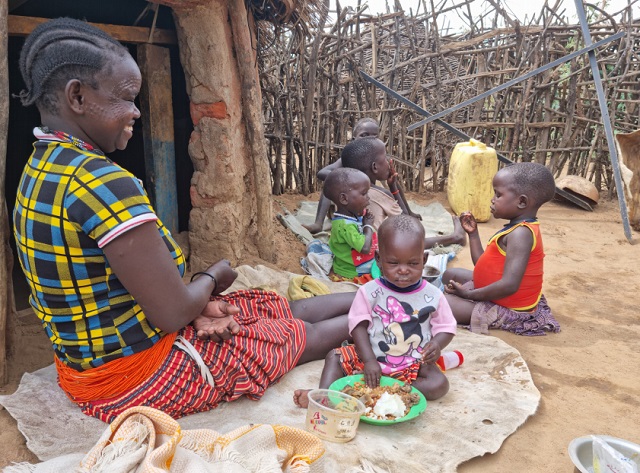
Donors offer relief but locals have different ideas
Kampala, Uganda | RONALD MUSOKE | The north-eastern sub-region of Karamoja is notorious for its perennial food shortage. And once again humanitarian aid is flowing in.
This time, the aid is in form of a Shs16.69billion (€4 million) project known as the Pro-Resilience Action project (Pro-ACT). The project funded by the European Union is being implemented with collaboration between two UN agencies; the World Food Programme (WFP) and the Food and Agriculture Organisation (FAO), and the Office of the Prime Minister. The project is intended to help the poor and vulnerable people respond to food shocks.
The project intends to work towards strengthening the shock response systems in all the nine districts of Karamoja through early warning on weather patterns and assistance to enable households take action to reduce their risk.
Karamoja, a conglomeration of nine districts, is about 27,511 sq km in size and has a population of about 1.2 million people. Until recently, it was one of the remotest sub-regions in Uganda and because of this; it is still plagued by some of the lowest development indicators in the country.
The region which suffers from perennial drought has poverty rates of about 65%; a rate which is three times higher than the national average and more than 30 times that of Kampala—Uganda’s capital city whose poverty score stands at 2%.
Historical drought analysis done by two UN agencies, FAO and WFP, shows that Karamoja has a 30% chance of experiencing a drought or dry spell in any given year, the highest in the country.
“Our people are suffering because there was no rain, the crops failed, and they do not know what to do. This happens every lean season. Yet, we are never prepared. We need to give people timely and accurate information and improve their capacity to prepare for shocks,” said Komol Paul Lotee, the Kotido District LCV Chairperson during the launch of the project in Kotido on Aug.31.
“We are glad the EU, WFP, and FAO brought this project to Karamoja because we need urgent support when it comes to preparing and responding to food security shocks such as drought,” he said.
The lean seasons—the period between planting and harvest—usually occur between March and July every year and there is little food and minimal rainfall. According to the IPC analysis, about 360,000 people in Karamoja (30%) of the population faced high levels of food insecurity between March and July this year.
“Our people need simple weather information that they can understand and act upon. Government welcomes the project because it aims to empower communities with information and provide sustainable solutions. Information is power and, in the case of shocks, information is lifesaving,” said Esther Davina Anyakun, the Minister of State for Relief, Disaster Preparedness and Refugees.
A recent Integrated Food Security Phase Classification (IPC) analysis done by WFP, FAO and the Ministry of Agriculture, Animal Industry and Fisheries, found that Karamoja’s food scarcity problems are not about to go away.
The IPC analysis found all districts in Karamoja with worrying levels of malnutrition among young children and pregnant and lactating mothers.
Malnutrition was above emergency levels in Moroto and Napak districts. The rest of the region’s districts were said to be in “Alert,” meaning they also had relatively high levels of malnutrition.
Poor diet, chronic food shortage, poor sanitation and high levels of diarrhea and malaria were major contributors to the situation. High workloads for mothers and therefore reduced time for breastfeeding and other childcare demands were also cited as driving malnutrition. The IPC attributed the high levels of food insecurity in Karamoja to insecurity in some parts of Karamoja. (
 The Independent Uganda: You get the Truth we Pay the Price
The Independent Uganda: You get the Truth we Pay the Price



